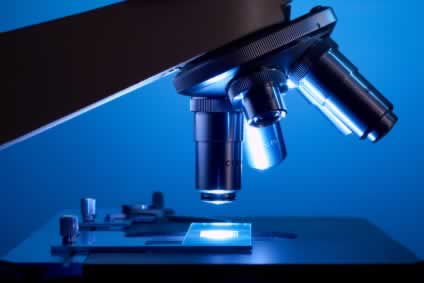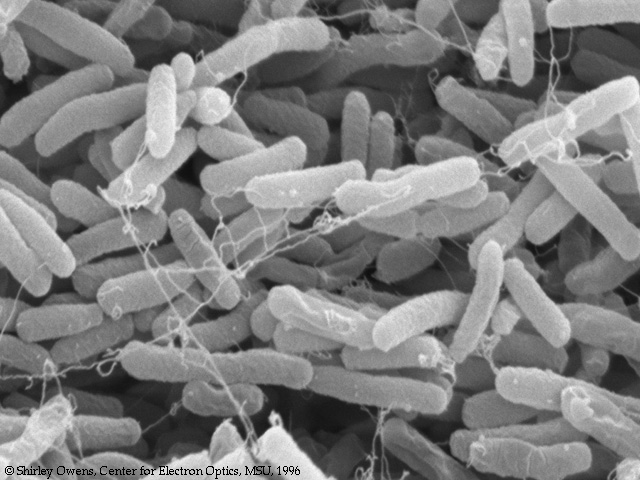Favorite Articles of the Moment
Disclaimer
• Your life and health are your own responsibility.
• Your decisions to act (or not act) based on information or advice anyone provides you—including me—are your own responsibility.
Recent Articles
-
We Win! TIME Magazine Officially Recants (“Eat Butter…Don’t Blame Fat”), And Quotes Me
-
What Is Hunger, and Why Are We Hungry?
J. Stanton’s AHS 2012 Presentation, Including Slides
-
What Is Metabolic Flexibility, and Why Is It Important? J. Stanton’s AHS 2013 Presentation, Including Slides
-
Intermittent Fasting Matters (Sometimes): There Is No Such Thing As A “Calorie” To Your Body, Part VIII
-
Will You Go On A Diet, or Will You Change Your Life?
-
Carbohydrates Matter, At Least At The Low End (There Is No Such Thing As A “Calorie” To Your Body, Part VII)
-
Interview: J. Stanton on the LLVLC show with Jimmy Moore
-
Calorie Cage Match! Sugar (Sucrose) Vs. Protein And Honey (There Is No Such Thing As A “Calorie”, Part VI)
-
Book Review: “The Paleo Manifesto,” by John Durant
-
My AHS 2013 Bibliography Is Online (and, Why You Should Buy An Exercise Physiology Textbook)
-
Can You Really Count Calories? (Part V of “There Is No Such Thing As A Calorie”)
-
Protein Matters: Yet More Peer-Reviewed Evidence That There Is No Such Thing As A “Calorie” To Your Body (Part IV)
-
More Peer-Reviewed Evidence That There Is No Such Thing As A “Calorie” To Your Body
(Part III)
-
The Calorie Paradox: Did Four Rice Chex Make America Fat? (Part II of “There Is No Such Thing As A Calorie”)
-
Interview: J. Stanton on the “Everyday Paleo Life and Fitness” Podcast with Jason Seib
|
  
Obesity and depression are strongly linked. (The quoted study can be found here.)
“Obesity, Luppino and colleagues found, increases the risk of depression in initially non-depressed individuals by 55 percent and depression increases the risk of obesity in initially normal-weight individuals by 58 percent.”
[…]
“Nearly one out of four cases of obesity is associated with a mood or anxiety disorder.”
[…]
Being obese, Luppino told Reuters Health, not only increases the risk of depression, but is more likely to fuel the onset of clinical depression, rather than merely depressive symptoms.
Executive summary: being fat makes you depressed, and being depressed makes you fat.
Now we tackle the interesting question: why?
Luppino (who is Dutch) makes a weak, tentative speculation about body image ideals and how Americans are more shallow than Europeans—but even if that were true, it still begs the question. Why are our body image ideals of athletic people, not obese people?
An important clue can be found here:
Being overweight [but not obese -JS] increased the risk of depression in initially non-depressed individuals somewhat, but depression did not increase the risk of being overweight over time.
In other words:
1) The fatter you get, the more likely you are to become depressed.
2) Being depressed doesn’t cause you to become merely overweight…either you stay thin, or you blast right through to obesity.
The explanation, of course, is evolutionary.
If humans had been selected to sit in an office chair and fill out TPS reports or play video games all day, we would be sessile brains with little nubs to type and move the mouse, and obesity would be a non-factor. But we have only worked office jobs for perhaps sixty years, even in industrialized America, which is not enough time to assert significant selection pressure.
In reality, humans have been selected over millions of years—since long before we were technically even human—for our ability to run down big animals and kill them with spears we made ourselves. When you have a body capable of doing that (even if you’ve never hunted so much as a squirrel), you feel good about yourself, because that’s what you are for, and you know that at a very deep, cellular level. And when you let yourself become fat and lazy, there is a dissatisfaction with yourself that you will never overcome, because your body knows that it’s no longer capable of providing for itself, let alone your family, in the Pleistocene environment to which we are adapted.
Personally, I can’t stand gyms or “working out”. I need to go outside and do things. Ride my bike, run, ski, climb…there’s a reason people pay big, big bucks to live someplace they can be active in nature right out their door. It’s because that’s what we have been selected to do.
Live in freedom, live in beauty.
JS

Robert H. Demling, MD. The Role of Anabolic Hormones for Wound Healing in Catabolic States. J Burns Wounds. 2005; 4: e2.
“There is a well-recognized interrelationship between hormones, nutrition, and wound healing. The anabolic process of protein synthesis, with new tissue formation, requires the action of anabolic hormones. Exogenous administration of these agents has been shown to maintain or increase lean body mass as well as directly stimulate the healing process through their anabolic and anticatabolic actions.” [emphasis mine]
Note the word “required.” That is a very strong word in the scientific literature. Anabolic hormones like testosterone*, growth hormone, and IGF-1 are required to synthesize protein…and muscles, tendons, and all your other body tissues are made out of protein. So: in order to repair damage to your tissues, you require the action of anabolic hormones.
* The testosterone situation is complex: it seems to inhibit collagen synthesis while encouraging other types of protein synthesis. However, certain synthetic anabolic steroids seem to encourage collagen synthesis. I may explore this in more detail in the future.
You may also recall that levels of these hormones decrease dramatically as we age, starting around age 25 and beginning a steep plunge around age 40. That is why we heal more slowly as we age.
(Yet, strangely enough, the medical establishment does not routinely prescribe anabolic hormones to people over age 25 who are recovering from injuries. We are told to accept slow and imperfect healing as an inevitable consequence of aging, despite the ready availability of drugs that can fix this problem. Wouldn’t it seem strange if we were told that pain was an inevitable consequence of injury and refused access to Vicodin, or even Tylenol? But that is a different discussion for a different time.)
Moving ahead: in order to speed the process of healing, it is clear that we need to boost our levels of anabolic hormones. Besides adequate sleep and protein intake, the most effective way to do this is…exercise.
IGF-1:

Schwarz AJ, Brasel JA, Hintz RL, Mohan S, Cooper DM. Acute effect of brief low- and high-intensity exercise on circulating insulin-like growth factor (IGF) I, II, and IGF-binding protein-3 and its proteolysis in young healthy men. J Clin Endocrinol Metab. 1996 Oct;81(10):3492-7.
“In summary: 1) brief exercise leads to small but significant increases in circulating IGF-I, IGF-II, IGFBP-3, and IGFBP-3 proteolysis; and 2) these responses may be influenced by exercise intensity.” (Small but significant = 8-13% for low intensity exercise, and 13-23% for high-intensity exercise.)
Now, the big one: human growth hormone (hGH).
I prefer to link to studies directly, but this article does such an excellent job of summarizing and linking several studies linking hGH release to exercise frequency and intensity that I’ll just point you here:
Human Growth Hormone: Breaking Down a Few Scientific Studies
Apparently the key here is the intensity of the exercise: just 30 seconds of all-out sprinting increased hGH secretion by 4.5 times, and serum hGH remained elevated for 90-120 minutes afterward! So it seems that, contrary to the bodybuilders’ consensus, you don’t necessarily have to lift heavy weights to cause hGH release (though lifting heavy is certainly an effective way to do so.)
Furthermore, multiple short bursts throughout the day are more effective than a single workout:
Wideman L, Weltman JY, Hartman ML, Veldhuis JD, Weltman A. Growth hormone release during acute and chronic aerobic and resistance exercise: recent findings. Sports Med. 2002;32(15):987-1004.
“Following the increase in GH secretion associated with a bout of aerobic exercise, GH release transiently decreases. As a result, 24-hour integrated GH concentrations are not usually elevated by a single bout of exercise. However, repeated bouts of aerobic exercise within a 24-hour period result in increased 24-hour integrated GH concentrations.”
Executive summary: in order to recover as quickly as possible from injuries—particularly as we get older and our natural levels of anabolic hormones decrease—perform multiple short bouts of high-intensity exercise, throughout the day, in whatever form your injury leaves you able to do so.
If you have leg injuries, lift some barbells. If you have arm or back injuries, do sprints on a stationary bike. If you’re confined to a hospital bed, lift some books. Do whatever you can without re-injuring yourself, because you will heal faster and more completely.
Live in freedom, live in beauty.
JS

Americans have become paranoid about germs. We buy billions of dollars of alcohol wipes, hand sanitizers, and antibacterial soaps (even though triclosan has been proven to be both ineffective and a bioaccumulative pollutant…)
Aiello, A.E., Larson, E.L. & Levy, S.B. (2007) Consumer antibacterial soaps: Effective or just risky? Clinical Infectious Diseases, 45:S137-S147.
(Or, a popularized version with more references.)
Here is a typically scary article about “The Germiest Places In America.”
AAAAAA! GERMS EVERYWHERE! AAAAAAAAAAA!
Grim, isn’t it? The first world is apparently one giant, festering reservoir of filth and disease. (One hopes the authors of this article never travel to, say, India…or even the average day-care center.) Now let’s see what our daily life would be like if we used all the suggestions from this article…
- When you enter a hotel room, clean the remote control, phone, clock radio, door handles, and light switches with germicidal wipes.
- Once a week, apply a disinfecting cleaner to the tub and dry the tub with a clean towel.
- Wipe down machines with antibacterial wipes before working out.
- When visiting a park, carry alcohol wipes or hand-sanitizing gel in your purse, and clean everybody’s hands a couple of times during a park visit, especially before snacking. Pick warm sunny days for outdoor play: “The sun’s ultraviolet light is actually a very effective disinfectant.”
- Women: wipe your [purse] down every few days with a mild soap or disinfectant, then let it air dry.
- Carry an alcohol-based hand sanitizer with you and rub it on your hands after a visit to the ATM. Also, be sure to do it after you handle money. “Paper money actually carries quite a few germs, too.”
- Always use a disinfectant wipe on your shopping cart handle… or “Carry along a cart cover, like the Grip-Guard or Healthy Handle, a dishwasher-safe polypropylene cover that fits over any size cart handle.”
Are you starting to feel like Howard Hughes, or like you’ve developed OCD? How many bottles of hand sanitizer can you carry with you at once? You’ll need several just to get through a single day on this program.
- Don’t let your child use the drinking fountain: “Send your child to school with plenty of their own beverages. Teach them to wash their hands, especially before and after lunch, going to the bathroom, or using the computer. Send hand sanitizer to every school teacher and give extras to your child. And when it’s your turn to squeeze into that little desk for Open House? Swab it off with an antibacterial wipe, Gerba says.”
We all know someone like this, don’t we? We try to stay far away from them, and we feel sorry for their kids. Isn’t this sort of paranoid syndrome in DSM-IV?
- Run your washer and dryer at 150ºF, and wash whites with bleach (not the color-safe type; it doesn’t pack the same punch), which kills 99% of bugs. Transfer wet laundry to the dryer quickly so germs don’t multiply, wash underwear separately (there’s about a gram of feces — a quarter the size of a small peanut — in every pair of dirty underwear), and dry for at least 45 minutes. Wash your hands after laundering, and run a cycle of bleach and water between loads to eliminate any lingering bugs.
Suddenly a simple task like “doing laundry” has become an all-afternoon project…not to mention your clothes will be shredded into rags after a few months of this treatment.
Also, “1/4 a small peanut”? Seriously? Whose underwear was in this survey? Laxative addicts? Olestra fiends? I haven’t found a dingleberry in my drawers since I got out of college and could afford to buy toilet paper I couldn’t see through.
- In airplane bathrooms, “After using the toilet, wash and dry your hands thoroughly, and use a paper towel to handle the toilet seat, lid, tap, and doorknob. Put the lid down before you flush. If there’s no lid, turn your back to the toilet while flushing.”
You’re in a tiny airplane cabin with hundreds of other people and a very small reservoir of recirculated air. Whatever they’ve got, you’re already breathing it, including the bathroom air — so calm the heck down, OK?
- Clean your kitchen counters and sink with an antibacterial product after preparing or rinsing food, especially raw fruits and vegetables, which carry lots of potential pathogens like salmonella, campylobacter, and E. coli. … Sanitize sponges by running them through the dishwasher’s drying cycle. As for the sink, clean it twice a week with a solution of one tablespoon of chlorine bleach and one quart of water. Scrub the basin, and then pour the solution down the drain.
We’ve already established that antibacterial soap is useless and ineffective, not to mention bioaccumulative and possibly toxic…wait, clean everything after *rinsing* food? People, if you knew what happened in those restaurant kitchens whose food you blithely eat in nearly every day, you’d crap a brick. Then you’d realize you’re being needlessly paranoid, because none of us are regularly getting sick from restaurant food.
———
Phew! What with all this wiping and cleaning and scrubbing and avoiding, I’m starting to feel a bit exhausted. What was I doing…? That’s right, I was going to grab the alcohol wipes before I touched my computer keyboard and mouse (they’re covered with germs!) but I left them in a drawer and there are germs all over the drawer pull and on the package of wipes…AAAAAAAAA!
Seriously…in order to follow this program, each of us would be using entire bottles of hand sanitizer every day—and we wouldn’t have time to leave our houses anyway, because we would constantly be towel-drying our showers and running empty loads of bleach water through the washing machine. Yet somehow, humans lived, survived, evolved, covered the planet with billions of other humans, and WENT TO THE MOON without ever doing a single one of these things. Somehow, we have all survived to adulthood without being Crazy OCD Hand-Washing Guy or Obsessive Lysol Lady.
Why is that?
Because germs are everywhere. Literally. They’re in the air, on our skin, in our bodies, and on everything we touch unless we are in a sterile operating theater. The reason we don’t all die is because we have this wonderful thing called an immune system—and if we eat well and get enough sleep, our immune system can fight off almost any germ the world can throw at us…
…because for uncounted millions of years, starting long before humans were human, anyone whose immune system lost to the germs DIED.
We are the descendants of millions of generations of creatures who survived bacilli, cocci, spirochetes, viruses, prions, nematodes, flukes and worms. We survived countless infections, infestations, and epidemics. And the more stressed we get about the sources of germs all around us, the more susceptible we are to sickness and disease—because cortisol (our stress hormone) is immunosuppressive, as is losing sleep over something that’s everywhere anyway.
Yes, we should wash our hands after using the toilet. No, we shouldn’t cough or sneeze on other people, nor on their food. Yes, sterile medical practice is the biggest lifesaver in the history of the medical profession (even more so than vaccination), and we should all give Ignaz Semmelweiss* a posthumous nod of thanks…
But don’t be one of Those People…because that fortress of alcohol wipes isn’t what is keeping you healthy. Your immune system is what’s keeping you healthy, and you’ll live a longer and happier life if you spend your time eating well, exercising daily, and getting enough sleep instead of worrying about who touched the shopping cart handle before you.
Live in freedom, live in beauty.
JS
(* Semmelweiss was hounded into insanity by the medical profession’s refusal to believe that doctors should wash their hands between dissecting corpses and birthing children or performing surgery. His lifesaving sterile practices were only widely accepted well after his death.)
|
“Funny, provocative, entertaining, fun, insightful.”
“Compare it to the great works of anthropologists Jane Goodall and Jared Diamond to see its true importance.”
“Like an epiphany from a deep meditative experience.”
“An easy and fun read...difficult to put down...This book will make you think, question, think more, and question again.”
“One of the most joyous books ever...So full of energy, vigor, and fun writing that I was completely lost in the entertainment of it all.”
“The short review is this - Just read it.”
Still not convinced?
Read the first 20 pages,
or more glowing reviews.
Support gnolls.org by making your Amazon.com purchases through this affiliate link:

It costs you nothing, and I get a small spiff. Thanks! -JS
.
 Subscribe to Posts Subscribe to Posts
|
Gnolls In Your Inbox!
Sign up for the sporadic yet informative gnolls.org newsletter. Since I don't update every day, this is a great way to keep abreast of important content. (Your email will not be sold or shared.)
IMPORTANT! If you do not receive a confirmation email, check your spam folder.
|







